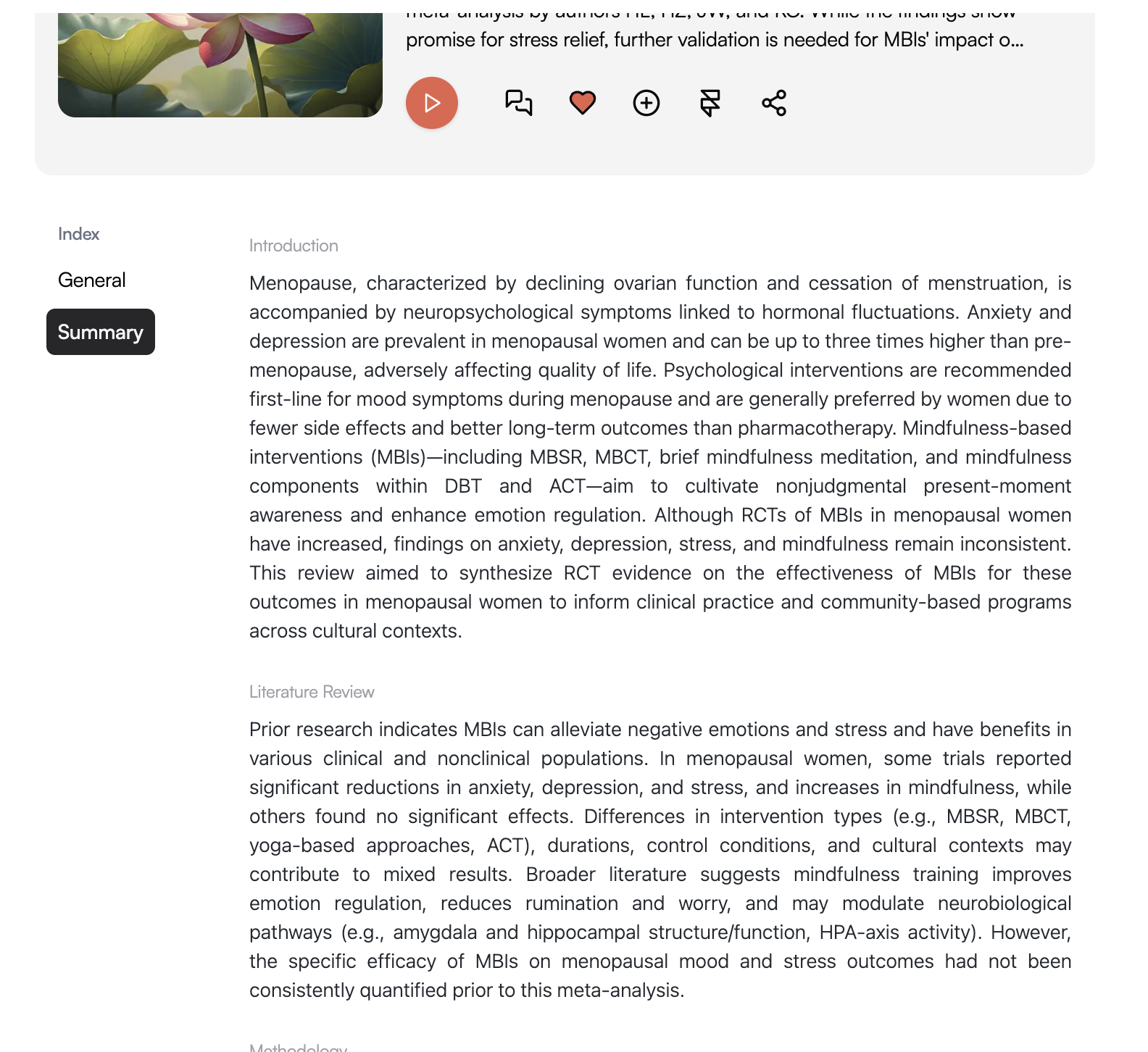Beyond the PDF: How ResearchBunny Expands Reach, Boosts Citations, and Proves Real Impact

Citations and impact don’t happen automatically, they’re earned.
Not just by publishing great research, but by making it discoverable, understandable, and engaging to wider audiences.
Yet most papers still live as static PDFs, locked behind complex language, paywalls, and single-format barriers. Researchers lose visibility. Readers lose clarity. Potential citers lose confidence.
ResearchBunny changes that. By transforming your paper into multiple accessible formats...multilingual briefs, plain-language summaries, audio explainers, and built-in Q&A, your research becomes easier to find, easier to consume, and easier to cite.
The result? More reach, stronger engagement signals, and more citations over time.
The Outcomes Researchers Care About
To grow citations, real-world influence, and long-term engagement, researchers increasingly need to:
1. Be discoverable globally
Across languages, regions, and platforms outside traditional journals.
2. Offer multi-format access
Short summaries, audio explainers, highlights, and visuals for busy or non-specialist readers.
3. Enable conversation, not just consumption
Readers must be able to ask questions, clarify methods, and cite confidently.

4. Track engagement across channels
Clicks, listens, Q&A threads, geographic reach, altmetrics, and more, evidence needed for grants, promotion, and impact reports.
These expectations are growing, yet most researchers don’t have the time or tools to deliver all of this.
The Pain Points Holding Research Back
Even groundbreaking papers struggle to reach their potential because:
1. The PDF is the only format
Journalists, practitioners, industry leaders, and even academics skim, long PDFs slow them down.
Try this at www.researchbunny.com
2. Language becomes a barrier
Non-English speakers and readers outside your subfield miss key insights and context.

3. There’s no easy pathway for questions
If a potential citer can’t clarify methodology or interpret a figure, they may avoid citing altogether.
4. Impact is hard to prove
Researchers share their work widely, but lack evidence showing where engagement happened or how the research traveled.
Research deserves better. And so do researchers.
How ResearchBunny Solves These Challenges
ResearchBunny expands your research beyond the PDF unlocking visibility, accessibility, and measurable influence.
Below is how we do it.
A) Increase International Visibility & Break Language Barriers
1. Multilingual Briefs & Highlights
ResearchBunny transforms your abstract into concise, plain-language briefs available in major global languages.
This ensures that scholars, journalists, policymakers, and practitioners everywhere can grasp your contribution instantly.
2. Localized Metadata & Keywords
Region-aware keywords and topic tags increase discoverability across non-English search ecosystems and academic networks.
3. Smart Global Distribution
Your work can reach academic groups, labs, and practitioner communities across multiple regions not just a single platform.

Why it matters:
Better language access + broader reach =
🔹 more readers in new geographies
🔹 more citations in regional journals
🔹 more collaboration and recognition
B) Reach Non-Academic and Public Audiences
1. Plain-Language Summaries
A clear 200–400 word explainer helps:

- policymakers
- NGOs
- journalists
- educators
- industry professionals
understand your research without jargon.
2. Issue-Based Pages
Aggregate your papers, data, and visuals into a topic hub (e.g., “Heat Resilience in Urban Housing”) for stakeholders working on real-world problems.
3. Share-Anywhere Cards
Short, visual cards with your key finding drive higher click-through across newsletters, LinkedIn, lab sites, and social channels.
Why it matters:
Real-world visibility often loops back into academia, journalists cite your work, think tanks reference it, and scholars follow those signals.
C) New Formats: Audio Summaries That Travel Further
1. Auto-Narrated Audio Briefs (60–180 seconds)
A quick explanation of your core finding, method, and implications perfect for busy audiences.

2. Embed Anywhere
Add the audio player to preprints, OSF/Zenodo pages, lab websites, and institutional profiles.
3. Micro-Podcast Series
Batch your summaries into a "paper-a-week" audio feed for continuous exposure.
Why it matters:
Audio reaches policymakers, clinicians, educators, and global audiences especially on mobile widening the funnel for future citations.
D) Built-In Q&A: Turn Uncertainty Into Citations
1. Contextual Q&A Threads
Readers can ask questions tied directly to specific parts of your paper — e.g., sample size, code availability, model justification.
2. Author-Verified Responses
Your clarification becomes the authoritative, citable source.
3. Reusable Answers
High-value questions can be promoted into FAQ sections and highlight boxes for future readers.
Why it matters:
When questions get answered quickly, hesitant readers become confident citers.
Every resolved question prevents a lost citation.
E) Measurement That Matters (Not Just Pageviews)
1. Multi-Channel Analytics
Track:
- reads
- listens
- geographic reach
- language distribution
- external referrers
2. Engagement Signals
Monitor time-to-answer, Q&A volume, and resolved threads, soft indicators closely tied to citation behaviour.
3. Impact Packs
Download a clean, citable snapshot of your research’s reach for:
- grant renewals
- final reports
- promotion dossiers
- partnership pitches
Final Thoughts
The future of research visibility goes far beyond the PDF.
When your findings are accessible in multiple languages, formats, and channels and when readers can ask questions and get clarity instantly, citations grow naturally.
ResearchBunny helps your work travel further, reach more people, and generate the impact it truly deserves.
🧩 Need more information? Get in touch - tarun@researchbunny.com
Follow us on LinkedIn for more tips, case studies and research-visibility insights.
Skip the jargon. Hear key insights from real papers in 15 minutes or less in your language.

Get notified every time we post a new blog














